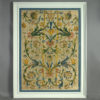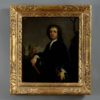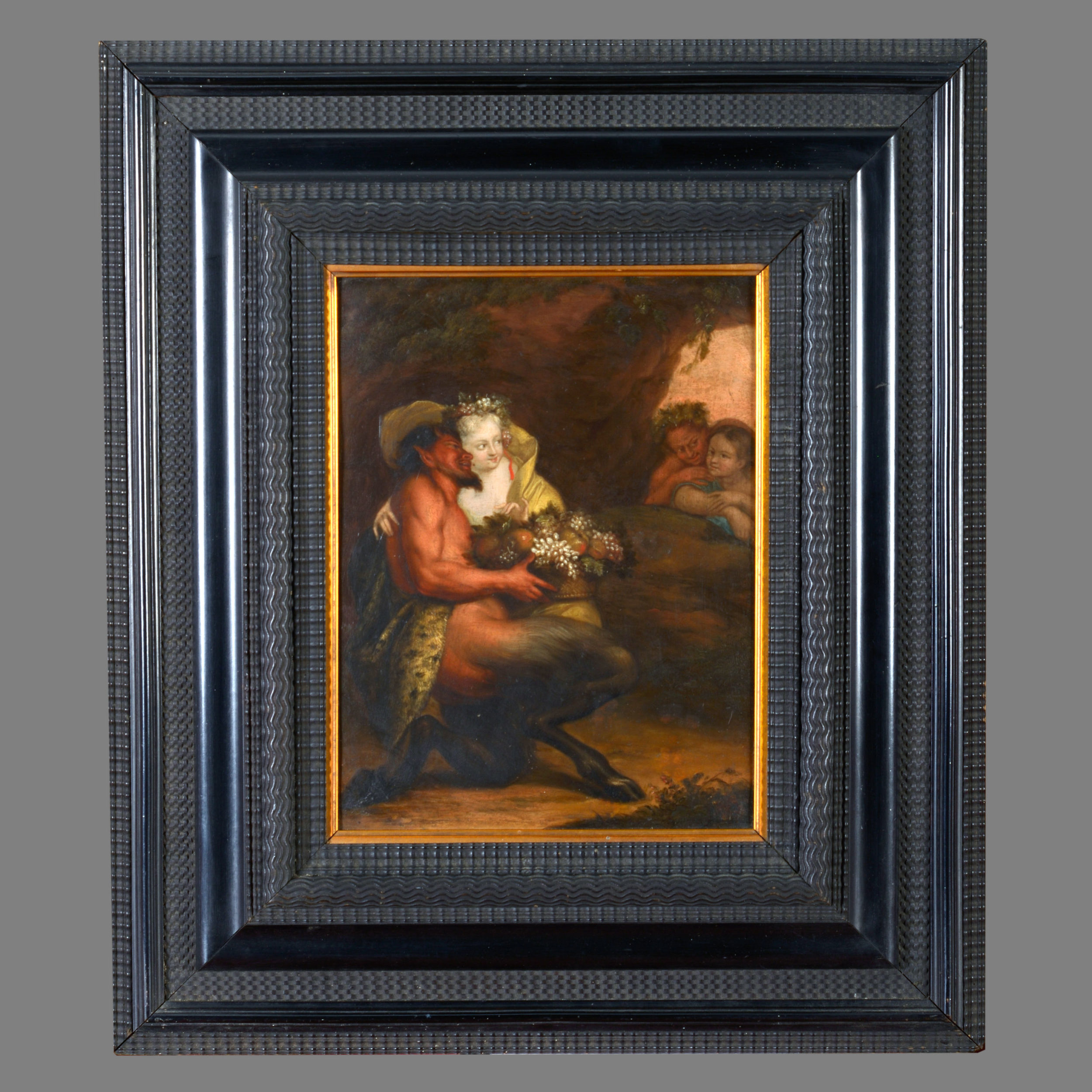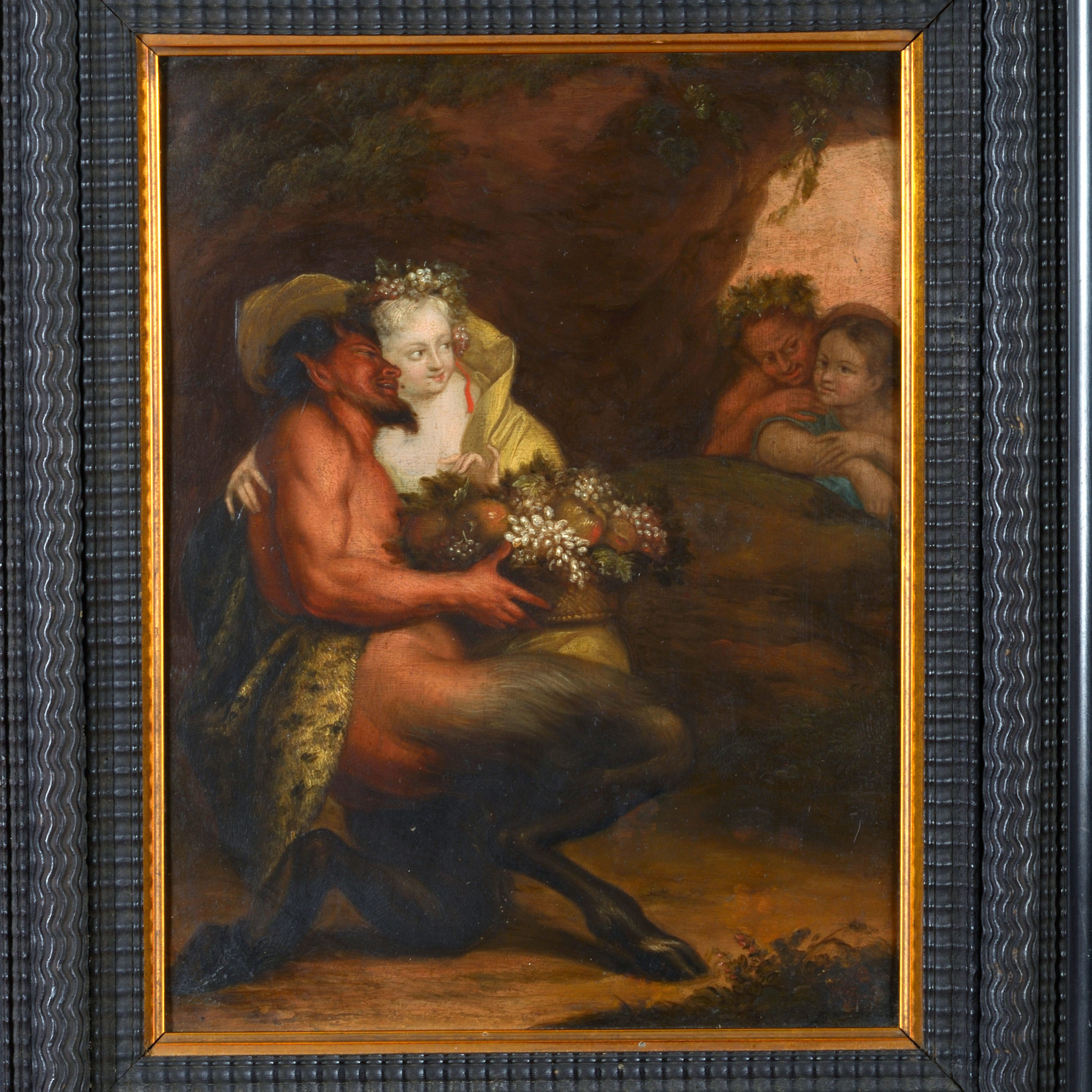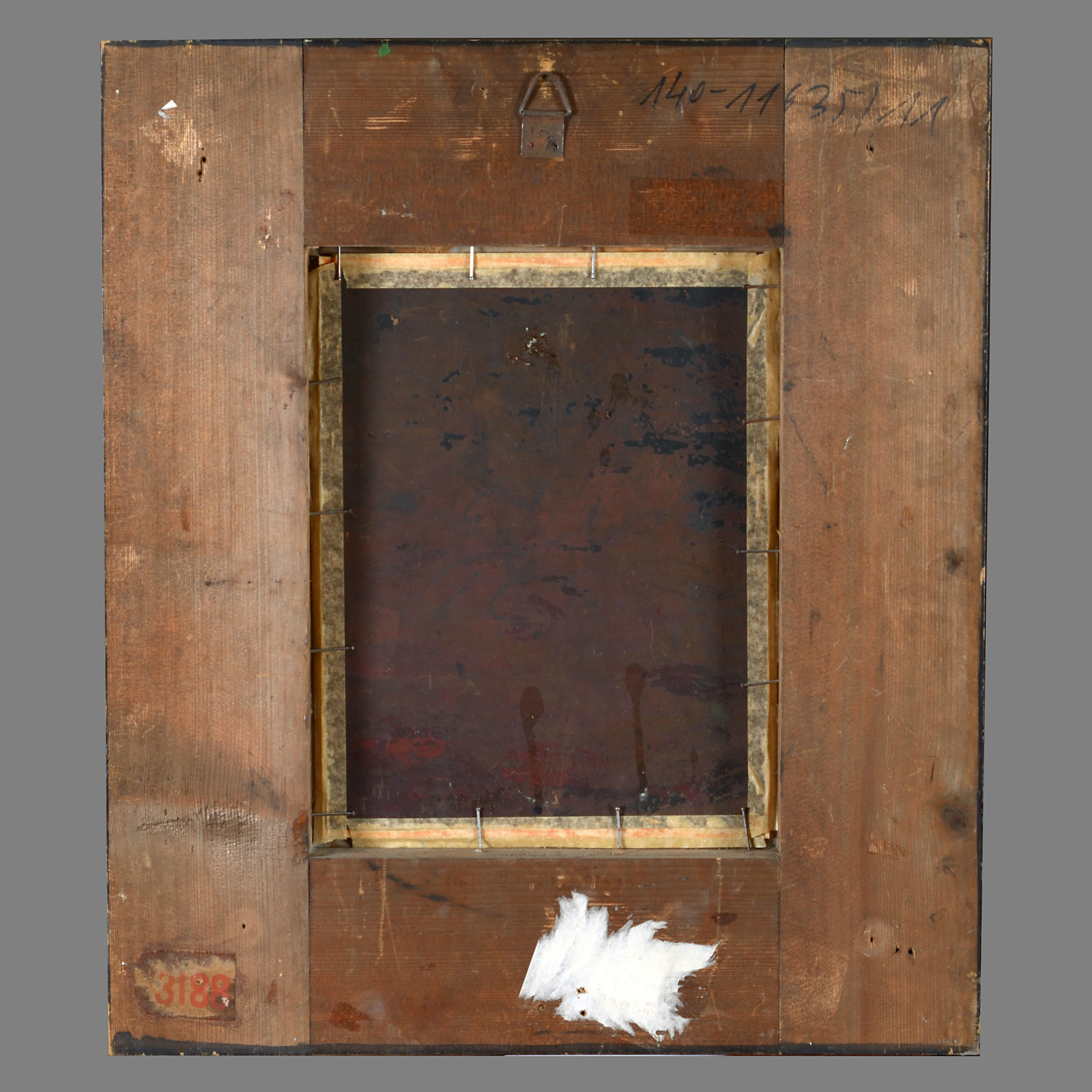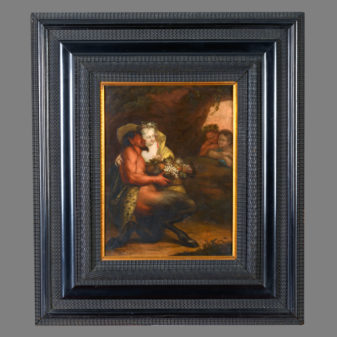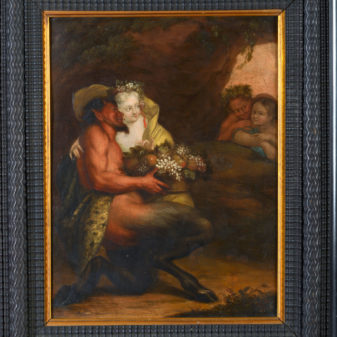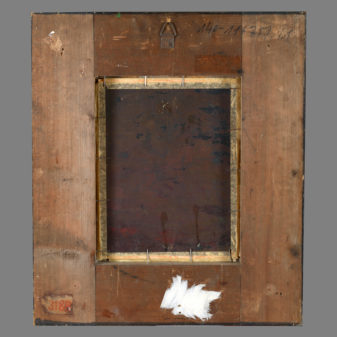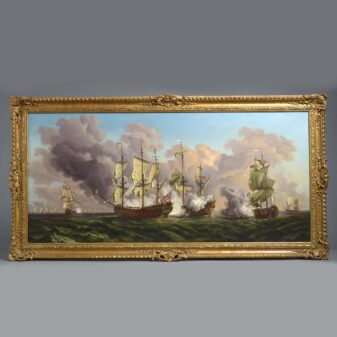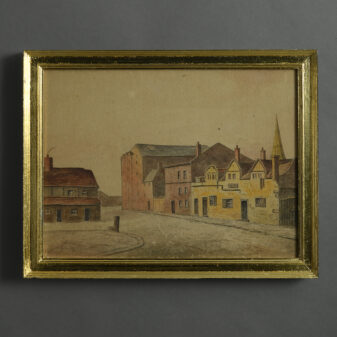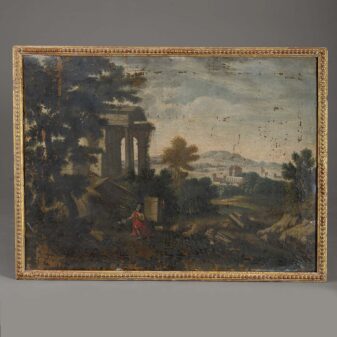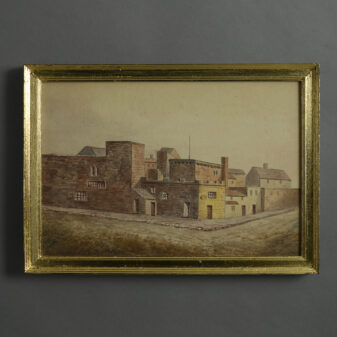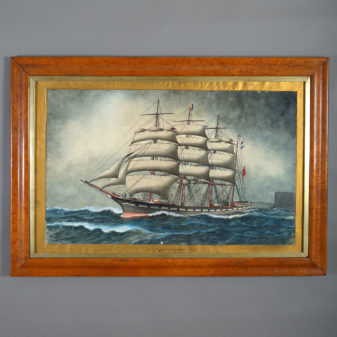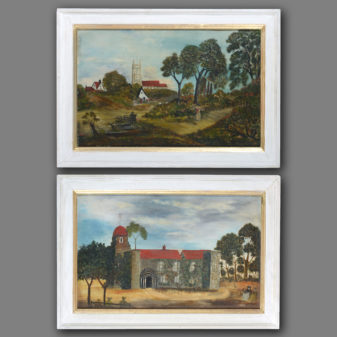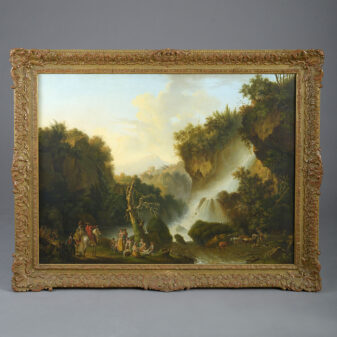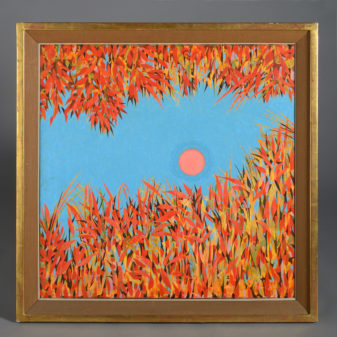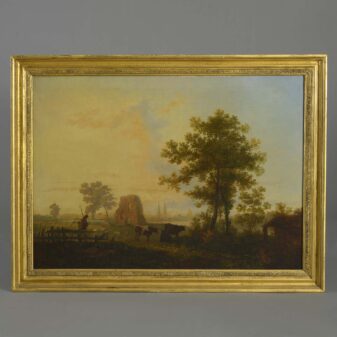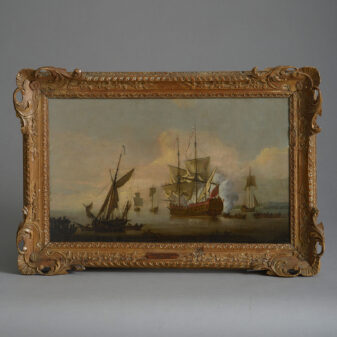Circa 1720 Netherlands
Dutch School, 18th century Satyrs and Nymphs
£2,800
SOLD
Height 23 inches (58.42 cm)
Width 19 1/2 inches (49.53 cm)
Depth 3 inches (7.62 cm)
Dutch School. 18th century
Satyrs and Nymphs
Oil on copper; held in a carved wood Dutch ebonised ripple moulded frame. Dimensions refer to size of frame.
This delicately painted picture depicts satyrs and nymphs meeting in a wooded clearing. A popular subject in art over many centuries this charming and engaging scene possibly alludes to the ancient Greek poet Moschus whose fifth great poem was a Lesson for Lovers – Pan loved his neighbour Echo; Echo loved a frisking Satyr; and Satyr, he was head over ears for Lydè. As Echo was Pan’s flame, so was Satyr Echo’s, and Lydè master Satyr’s. ‘Twas Love reciprocal; for by just course, even as each of those hearts did scorn its lover, so was it also scorned being such a lover itself. To all such as be heart-whole be this lesson read: If you would be loved where you be loving, then love them that love you’.
In Greek mythology, satyrs were half-man, half-beast creatures that lived in forests and hills. Usually pictured as human above the waist and as horse or goat below, they were often found with pointed ears or horns on their heads. The Greek poet Hesiod identifies satyrs as brothers of the nymphs, while also calling them ‘good-for-nothing’ and ‘mischievous.’ Followers of Dionysus, the god of wine and ecstasy, satyrs had a reputation for drunkenness and lewdness. They were considered symbols of fertility and were frequently portrayed chasing nymphs. During the festival of Dionysus in ancient Athens, plays featuring a chorus of boisterous satyrs were often performed along with the historic serious tragedies. Along with the Nymphs or Maenads – minor goddesses of nature usually represented as young and beautiful – Satyrs formed the train of the God Dionysus, dancing and singing.

